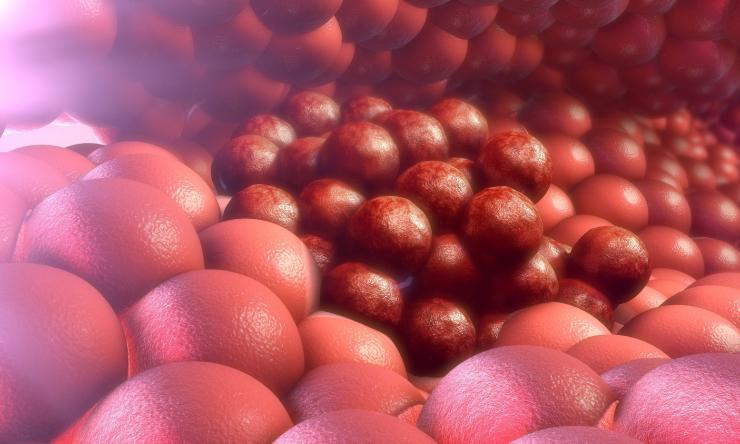Fluorescent dye helps guide pediatric liver tumor resection
When resecting tumors, surgeons aim to spare as much healthy tissue as possible while ensuring removal of the entire tumor. Pediatric surgeons at Baylor College of Medicine and Texas Children’s Hospital believe a fluorescent dye called indocyanine green (ICG) paired with a near-infrared camera may be useful tools in achieving that goal. The results of their study are published in the Journal of Pediatric Surgery.
The retrospective study details the results of 14 patients who underwent surgical resection using ICG and a near-infrared camera. Patients presented with a variety of tumor types, including primary tumor in the liver, metastases in the lung and extrahepatic disease, or tumor nodules that had moved to other places in the body. Prior to surgery, the patients were injected with ICG, which is retained in tumor cells, but not healthy cells. The ICG causes the tumors to glow in fluorescent colors on the near-infrared camera during surgery. The camera images can guide surgeons in real time while they operate.
“In solid organ tumors, you can only see the edges of the tumor because you can’t see inside the organ. Using this tool is like having x-ray vision,” said Dr. Sanjeev Vasudevan, corresponding author of the study, associate professor of pediatric surgery in the Michael E. DeBakey Department of Surgery at Baylor and pediatric surgeon at Texas Children’s Cancer Center.
Vasudevan said this technique helps him safely separate the tumor from critical bile ducts and blood vessels in the liver. In the study, surgeons found that ICG guidance helped identify small malignant tumor lesions that were not visible on standard imaging or ultrasound. The ICG also illuminated the edges of the tumors more clearly for successful complete resection.
“I can use the fluorescence to navigate a 1 or 2 millimeter margin instead of perhaps a centimeter margin,” said Vasudevan, co-director of the Liver Tumor Program at Texas Children’s and member of the Dan L Duncan Comprehensive Cancer Center at Baylor. “When you are operating on a child, every millimeter makes a difference and every bit of healthy tissue that you can leave behind matters.”
The surgeons found that timing of the ICG injections impacted effectiveness. For primary liver tumors, injections needed to be done at least 72 hours before surgery to ensure the best possible ICG signal. In lung tumors, the surgeons observed best results when injections occurred only a day or two before surgery.
Researchers also examined how the pathology of the tumor relates to the intensity of ICG signaling. The study showed that both viable and nonviable tumors can show positive ICG signals. The team is working to better understand false positive signals and to improve ICG’s ability to target tumor cells.
ICG-guided surgery has not yet been proven to improve relapse rates or overall survival rates, but according to Vasudevan, it is a useful adjunct to surgery that merits further study.
“This technique may enable us to offer resection to patients who might not otherwise qualify for resection because of the extent of their disease,” Vasudevan said. “It may also offer an option for patients with metastatic disease who do not qualify for a liver transplant.”
Dr. Richard S. Whitlock, resident in the Michael E. DeBakey Department of Surgery at Baylor, and Dr. Kalyani R. Patel, assistant professor of pathology and immunology at Baylor are first authors of the study. Tianyou Yang, Dr. HaiThuy N. Nguyen and Dr. Prakash Masand from Baylor and Texas Children’s Hospital also contributed to this work. To see the funding for this research, view the publication.










